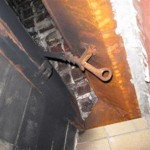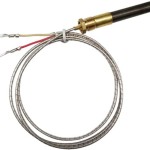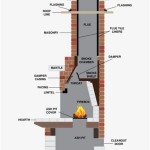Understanding and Removing Fireplace Brick Stain
Fireplaces, as focal points within a home, offer warmth and aesthetic appeal. Brick, a common construction material for fireplaces, is durable and visually appealing. However, fireplace brick is susceptible to staining from various sources, detracting from its appearance and potentially impacting its structural integrity in the long term. Understanding the causes of these stains, identifying their types, and applying appropriate cleaning methods are crucial for maintaining a clean and functional fireplace.
The porous nature of brick makes it highly susceptible to absorbing liquids and particulate matter. This absorption, combined with the frequent exposure to heat, smoke, and combustion byproducts, leads to the development of various types of stains. Addressing these stains requires a systematic approach that considers the specific stain type, the condition of the brick, and the appropriate cleaning solutions and techniques.
Identifying Common Types of Fireplace Brick Stains
Effective stain removal begins with accurate identification. Different types of stains require different cleaning strategies. Some common types of fireplace brick stains include soot, creosote, efflorescence, and rust.
Soot stains are the most common type found on fireplace brick. Soot is a black, powdery substance formed during the incomplete combustion of wood or other fuels. It adheres readily to the brick surface, creating a dark, unsightly layer. The accumulation of soot can also reduce the efficiency of the fireplace by insulating the firebox and hindering heat radiation.
Creosote is another common byproduct of burning wood. It's a tar-like substance that condenses in the chimney and can seep onto the fireplace brick, especially in the firebox area. Creosote is highly flammable and poses a significant fire hazard. Its removal is essential not only for aesthetic reasons but also for safety. Creosote stains are typically dark brown or black and can be thick and sticky.
Efflorescence appears as a white, powdery deposit on the brick surface. It is caused by soluble salts migrating to the surface of the brick through moisture. As the moisture evaporates, it leaves the salts behind, forming the characteristic white residue. Efflorescence is primarily a cosmetic issue, but it can also indicate underlying moisture problems within the chimney or fireplace structure.
Rust stains can occur if metal fireplace accessories, such as andirons or grates, come into contact with the brick and moisture is present. The iron in the metal oxidizes, forming rust, which then stains the brick surface. Rust stains are typically reddish-brown in color and can be difficult to remove if left untreated for extended periods.
Preparing for Fireplace Brick Stain Removal
Before commencing any cleaning procedure, proper preparation is essential to protect oneself and the surrounding area. This includes gathering the necessary materials, protecting the surrounding surfaces, and taking appropriate safety precautions.
The required materials will vary depending on the type of stain being addressed. However, some common materials include: safety glasses, gloves, a respirator or dust mask (especially for soot and creosote removal), stiff-bristled brushes (nylon or natural fiber), sponges, buckets, clean water, cleaning solutions (specific to the stain type), plastic sheeting or drop cloths, painter’s tape, and a putty knife or scraper.
Protecting the surrounding surfaces is critical to prevent damage from cleaning solutions or dislodged debris. Cover the floor around the fireplace with plastic sheeting or drop cloths, securing them with painter’s tape. Also, protect any nearby furniture or decorative items by moving them away from the work area or covering them with protective materials. If the fireplace has a metal screen or door, remove it before cleaning to prevent damage to the metal parts.
Safety precautions are paramount when working with cleaning solutions and potentially hazardous materials. Always wear safety glasses to protect the eyes from splashes and debris. Wear gloves to protect the skin from harsh chemicals. If removing soot or creosote, wear a respirator or dust mask to prevent inhalation of harmful particles. Ensure adequate ventilation by opening windows or using a fan. Always read and follow the manufacturer’s instructions for any cleaning solutions being used. Do not mix different cleaning solutions, as this can create dangerous chemical reactions.
Methods for Removing Specific Fireplace Brick Stains
Different stains require different cleaning methods and solutions. A tailored approach is more likely to be effective and minimize the risk of damaging the brick surface. The following sections outline methods for removing soot, creosote, efflorescence, and rust stains.
Soot Stain Removal: The initial step in removing soot stains is to dry brush the brick surface with a stiff-bristled brush. This will remove loose soot and debris. Vacuum up the dislodged soot using a shop vacuum with a HEPA filter. Next, prepare a cleaning solution consisting of warm water and a mild detergent, such as dish soap or trisodium phosphate (TSP). Apply the solution to the stained areas with a sponge or brush. Allow the solution to sit for several minutes to loosen the remaining soot. Scrub the brick surface with a stiff-bristled brush, working in small sections. Rinse the cleaned areas thoroughly with clean water. Repeat the process as needed until the soot stains are removed. For stubborn soot stains, consider using a commercial soot remover specifically designed for fireplace brick.
Creosote Stain Removal: Creosote removal is more challenging due to its tar-like consistency. Begin by scraping off as much of the creosote as possible using a putty knife or scraper. Be careful not to damage the brick surface during this process. Apply a commercial creosote remover according to the manufacturer’s instructions. These removers typically contain solvents that dissolve the creosote. Allow the remover to sit for the recommended time. Scrub the treated areas with a stiff-bristled brush to loosen the remaining creosote. Rinse the brick surface thoroughly with clean water. Creosote removal may require multiple applications of the creosote remover and repeated scrubbing. If the creosote stains are particularly thick and difficult to remove, consider hiring a professional chimney sweep or cleaning service.
Efflorescence Removal: Efflorescence is typically easier to remove than soot or creosote stains. Dry-brush the brick surface to remove loose efflorescence. Prepare a solution of warm water and a mild acid, such as vinegar or muriatic acid (hydrochloric acid). When using muriatic acid, dilute it according to the manufacturer's instructions and wear appropriate safety gear, including a respirator and gloves. Apply the solution to the affected areas with a sponge or brush. Allow the solution to sit for a few minutes to dissolve the efflorescence. Scrub the brick surface with a stiff-bristled brush. Rinse the cleaned areas thoroughly with clean water. If the efflorescence persists, repeat the process. Address the underlying moisture problem that is causing the efflorescence to prevent it from recurring. This may involve repairing leaks in the chimney or improving ventilation around the fireplace.
Rust Stain Removal: Rust stain removal often requires specialized cleaning products designed to dissolve iron oxide. Begin by cleaning the brick surface with a mild detergent and water to remove any loose dirt or debris. Apply a commercial rust remover according to the manufacturer’s instructions. These removers typically contain oxalic acid or other chelating agents that bind to the rust and lift it from the surface. Allow the remover to sit for the recommended time. Scrub the treated areas with a stiff-bristled brush. Rinse the brick surface thoroughly with clean water. For stubborn rust stains, repeat the process. If the rust stain is caused by a metal object in contact with the brick, remove the object and prevent it from coming into contact with the brick again. Consider applying a sealant to the brick surface to prevent future rust stains.
Following the cleaning process, allow the brick surface to dry completely. This helps to prevent moisture from becoming trapped within the brick, which can lead to further staining or damage. Inspect the cleaned area to ensure that all traces of the stain have been removed. If any stain remains, repeat the cleaning process or consider using a stronger cleaning solution. Once the brick is dry and clean, consider applying a sealant specifically designed for brick. This will help to protect the brick surface from future stains and moisture damage. Regular maintenance, such as sweeping or vacuuming the fireplace and chimney, can help to prevent the buildup of soot, creosote, and other debris.

Fireplaces Dyebrick

Mortar Wash Brick Fireplace Makeover Dimples And Tangles

How To Stain Brick

Wisconsin Brick Stain Project Modern Chicago By Transformers Houzz

Update The Color Of Your Brick Stained Fireplace Remodelaholic

Fireplaces Dyebrick Gallery

Brick Staining House Exterior Makeover Painted

How To Paint A Black Brick Fireplace Jennifer Allwood

How To Update A Brick Fireplace Homemade Ginger

Mortar Wash Brick Fireplace Makeover Dimples And Tangles
Related Posts








